Nothing beats freshly picked melons on scorching summer days. If you are planning on growing those fruits, but have no idea what cultivar to attempt, sugar baby watermelon is such a good bet.
Watermelon is not just a thirst quencher, but also provides a lot of nutrients. The fruit contains dietary fiber, copper, potassium, vitamins A, and C. Moreover, it has lycopene, a healthy antioxidant believed to prevent cancer.
Sugar baby itself is one of the sweetest and most prolific watermelon varieties.
Read on to learn about that cultivar. In this article, we have provided you with tips for growing, maintaining, and harvesting it.
A Brief Introduction to Sugar Baby Watermelon
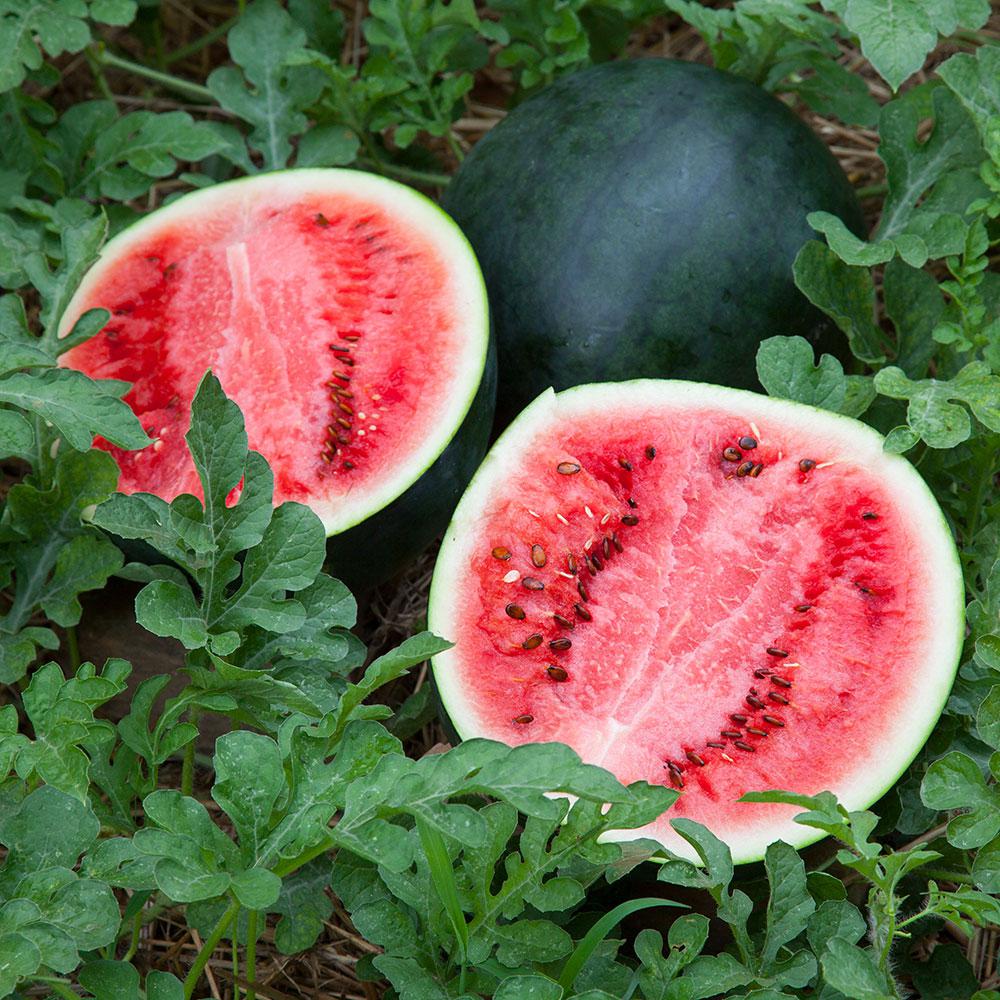
Sugar baby watermelon (Citrullus lanatus) was first developed in 1956. As an early-season cultivar, it reaches maturity about 75-80 days after seed germination.
Moreover, growers cultivate sugar baby watermelon because it fits in the icebox or refrigerator. The variety is also called a picnic type. As the name indicates, it is suitable for smaller families.
This cultivar grows well in warm Mediterranean climates. Speaking of sugar baby watermelon vine length, it can spread out up to 4 meters (12 feet) or longer. Furthermore, each plant generates a few melons.
Sugar baby comes in a perfectly round shape. It features a dark green rind with deep-toned stripes. Its red flesh is not only luscious but also crisp and firm.
There are very few tiny, black seeds that mottle the dark red flesh. The fruit size is normally 18-20 cm (7-8 inches) wide and 4-5 kg (8-10 pounds).
In terms of Brix measurement, sugar baby has a very high score, approximately 10.2. That means the variety is super sweet. No surprise, many commercial growers value it.
Despite its petite size, you shouldn’t overlook sugar baby. It is an amazingly productive watermelon cultivar.
Starting Sugar Baby Watermelon Seeds Inside
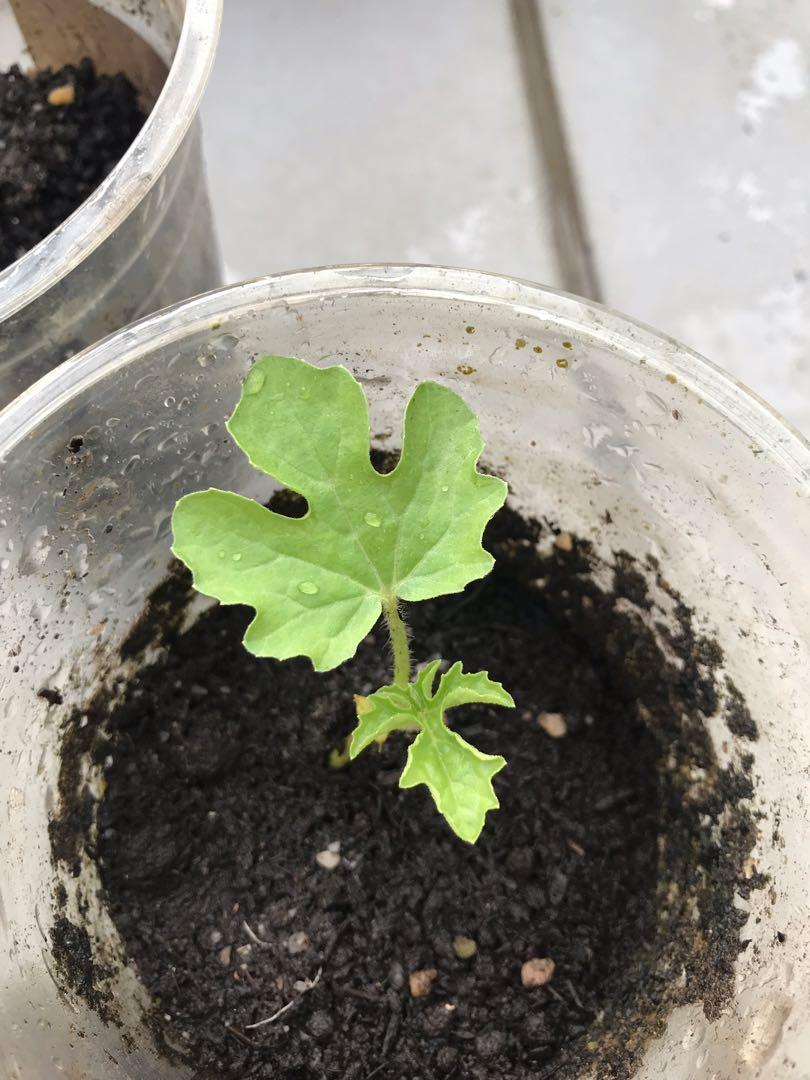
Most growers start the seeds indoors about 3 to 4 weeks before their last frost dates because sugar baby melons need a quite long growing period.
When it comes to indoor starting, you can sow the seeds of sugar baby watermelon in container or flats, approximately ¼ inch deep. The recommended sowing density is three seeds in each pot.
It is really important to keep the growing medium during germination. This takes 3 to 10 days.
Moreover, seeds will germinate well with the help of the heat. The soil temperature must be kept around 80-90 degrees Fahrenheit.
If you live in colder climates, a heat mat is deemed necessary.
Once the sugar baby seeds begin to germinate, slightly decrease the soil temperature to around 70 degrees Fahrenheit for one or two weeks, plus reducing water.
Thin to 1 young plant per pot. When the first of its real leaves have appeared, you should decrease watering frequency once more. Keep in mind that sugar baby is not drought-tolerant, so prevent it from drying out.
Make the seedling tough by exposing it to different outdoor conditions gradually. In late spring, move the plant to a permanent growing spot. Be sure the danger of the last frost truly has passed.
It would be better if you transplant the sugar baby melon plant on a cloudy day. This helps set a more manageable environment for the seedling and keeps it from getting wilted.
Talk about transplantation, we have an article about how to transplant asparagus, we think it’s better to know before you do any sugar baby melon transplantation.
Starting Sugar Baby Watermelon Seeds Outdoors
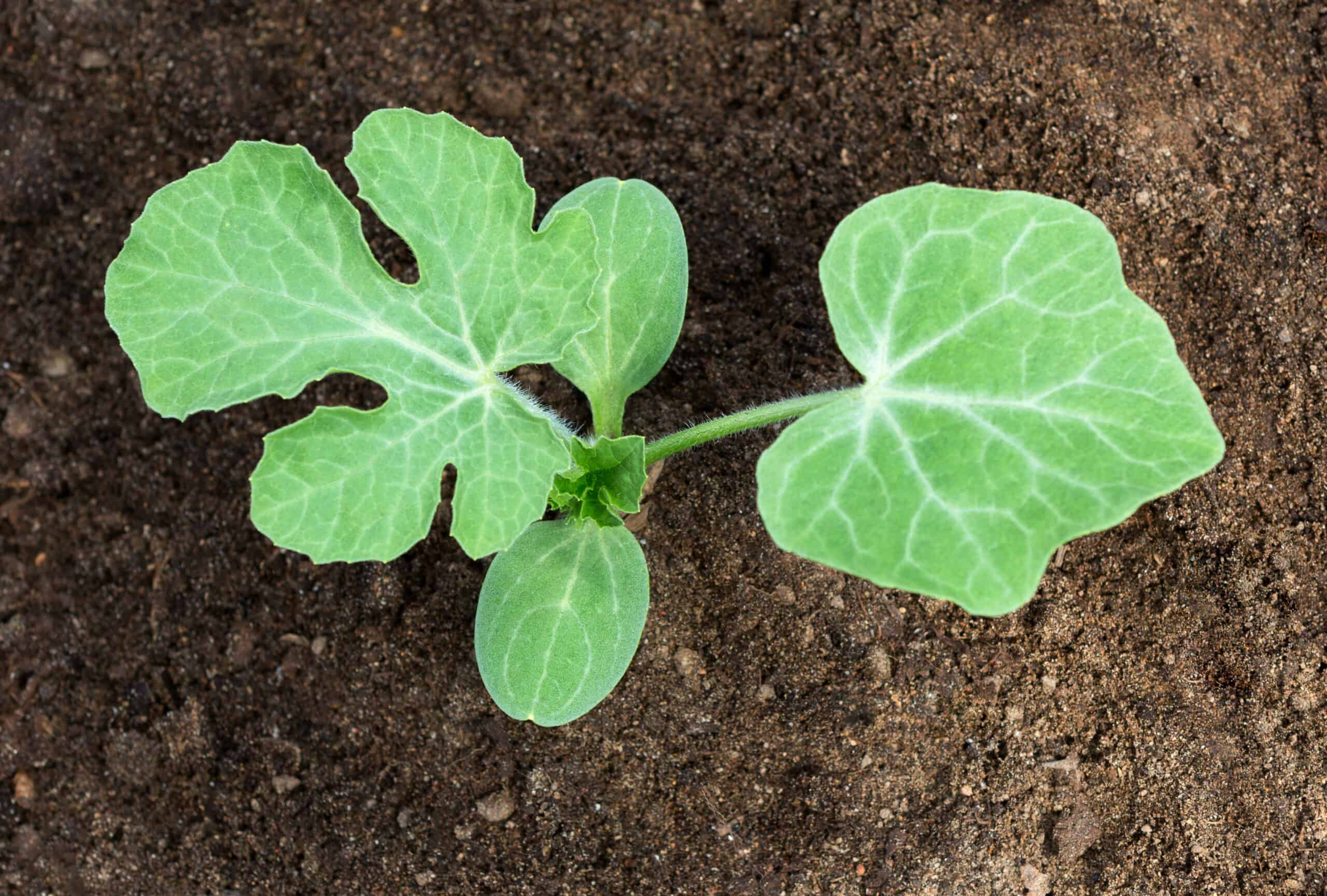
In case you have long, warm growing seasons, consider planting sugar baby seeds directly into the garden soil. On the other hand, gardeners who come from areas with cooler weather should opt for early maturing cultivars.
Furthermore, gardeners who live in areas with shorter growing periods also need to start young plants indoors. They must utilize IRT (Infra-Red Transmitting) or black plastic mulch. It retains moisture and warms the soil.
It is highly advisable to use garden fabric row covers. They do not only protect plants from pests but also let sunlight pass through to them.
Speaking of outdoor starting, sow seeds directly into garden one or two weeks after your local last frost.
During that period, the soil temperature is normally about 70 degrees Fahrenheit or warmer.
Set the seeds into the soil about an inch deep. There must be 6 seeds in each hill. Space the hills 4-6 feet apart (1.2 to 1.8 meters).
Another good plant spacing is 1 foot (30 cm) apart. The space between rows itself is about 5 feet.
If you grow sugar baby watermelon on a trellis, the spacings should be closer. Moreover, thin to two or three plants in each hill.
Choosing A Planting Site
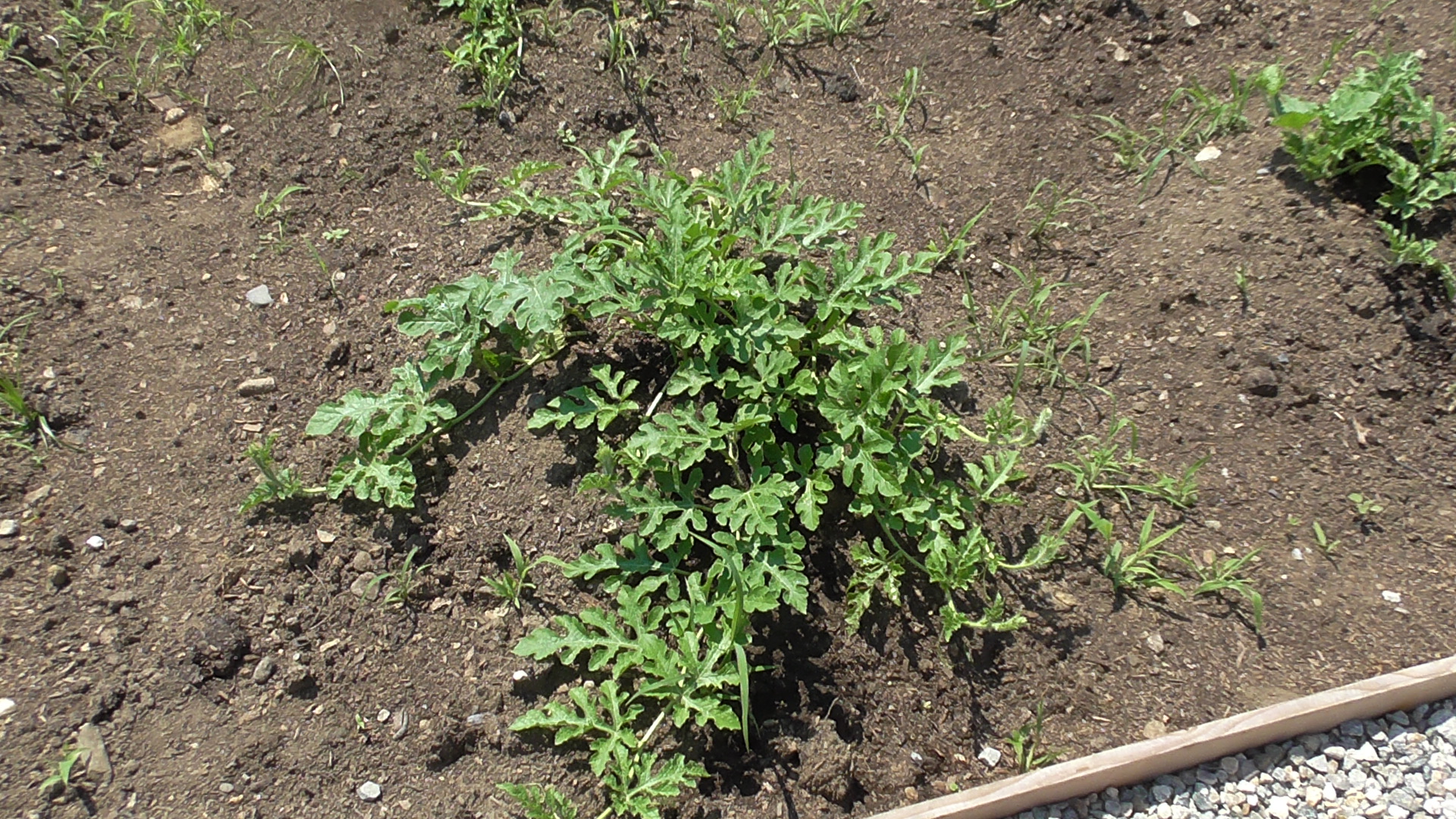
Sugar baby watermelon is relatively petite in size. The fruit also has a short harvest time. That’s the reason many growers adore it.
Even though sugar baby is easy to cultivate, you must prepare as well as choose a proper planting site, otherwise, it won’t grow well. Consider these things before setting the plants into the soil.
Soil Requirements

Sugar baby melons prefer well-drained, rich soil that contains a lot of organic matter.
Add at least three inches of decomposed manure and compost the garden beds. Furthermore, the pH level must be between 6.5 and 7.5.
Light-textured or sandy soils are great for planting sugar baby watermelons because they are rapidly warm in spring. The ideal soil temperatures should be 70 degrees Fahrenheit or warmer.
If the temperatures are below 50°F, you have to use black plastic to warm up the soils. By doing so, the growth of your plants won’t be hindered.
Light Requirements
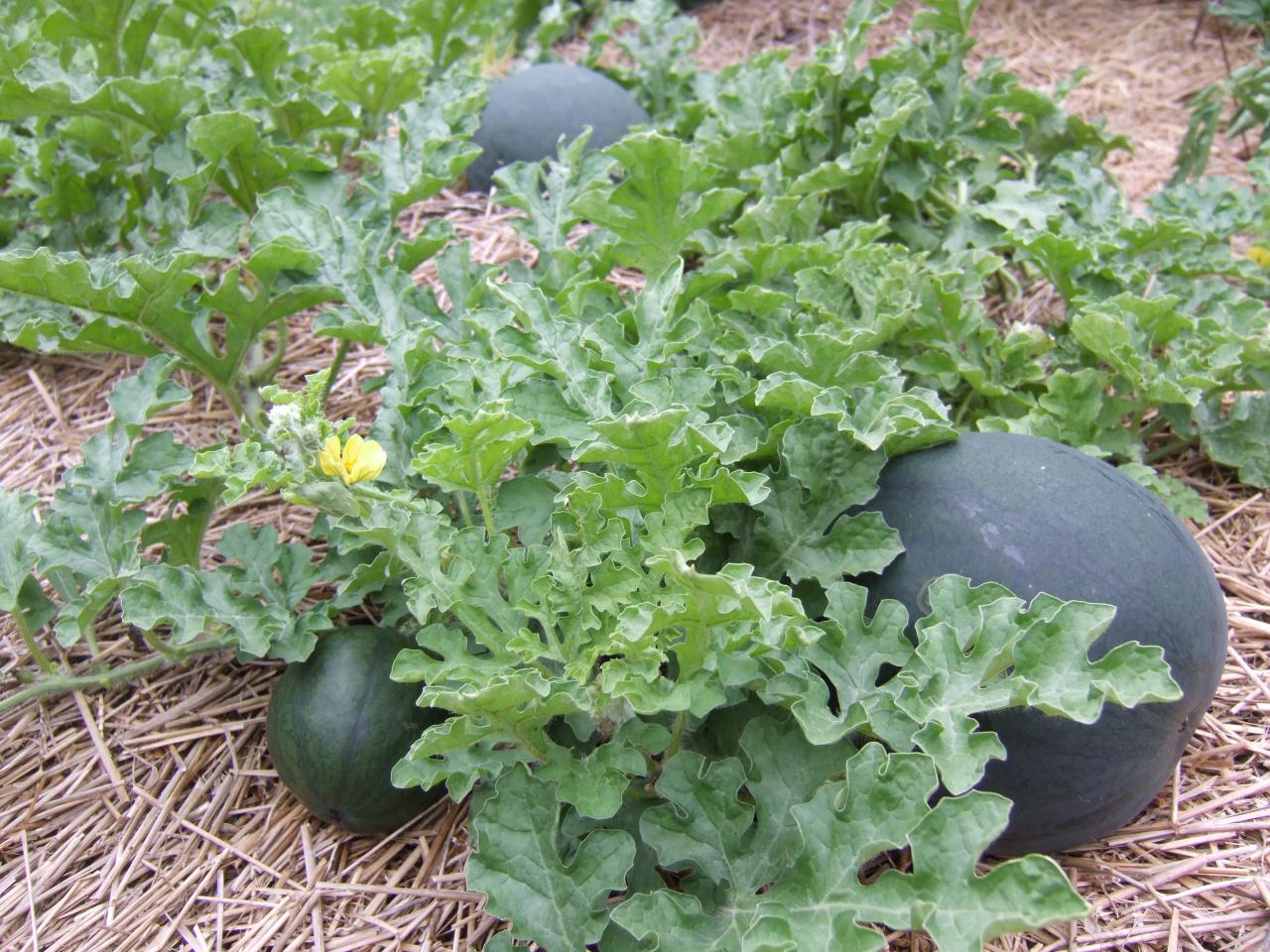
You should plant sugar baby watermelons in a spot with full sun exposure. They must be exposed to natural light at least 8 hours per day.
Water Requirements
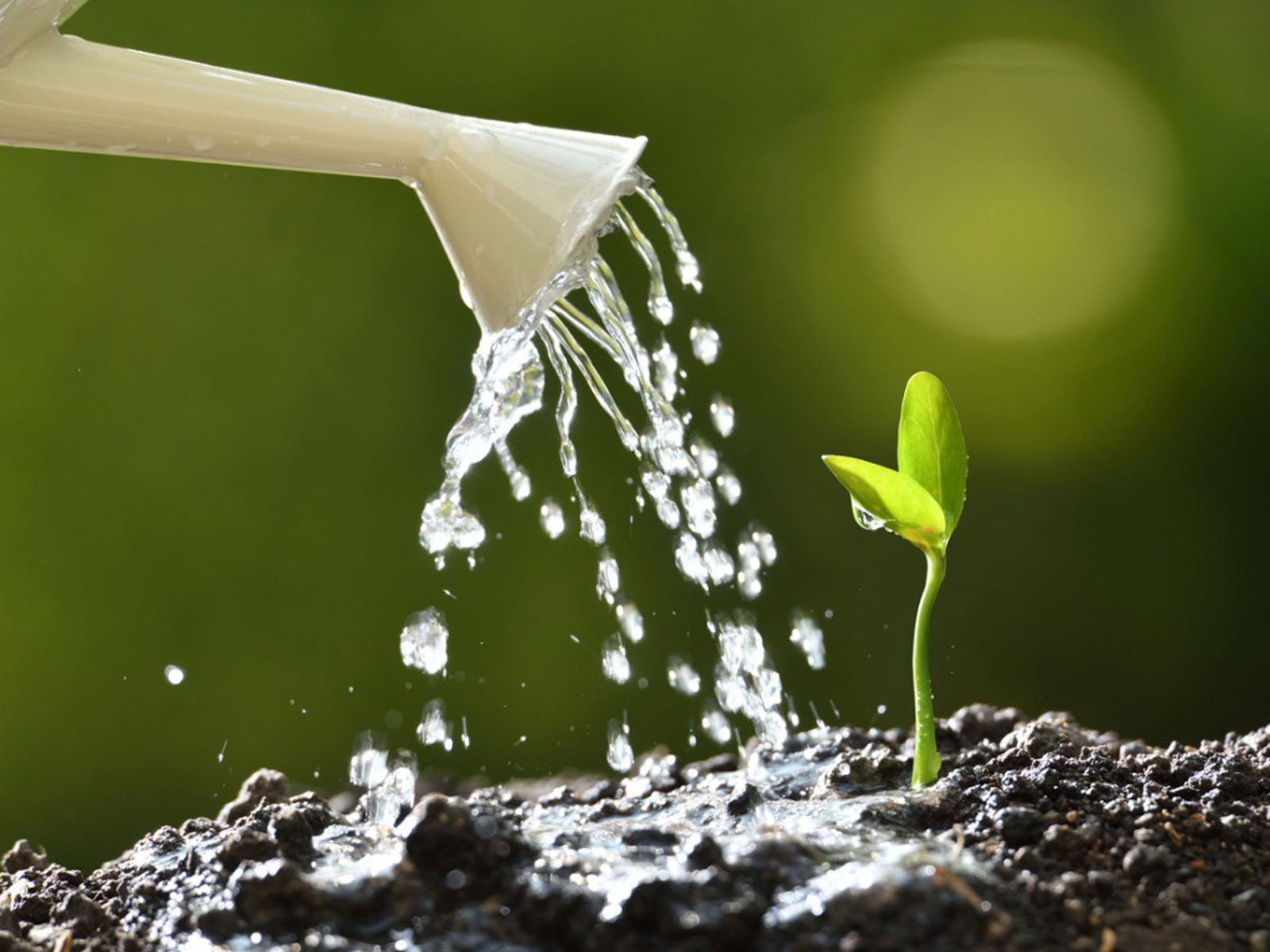
Consistent moisture is seriously needed until your sugar baby watermelon has a tennis ball size. Then, water the plant when the growing soil is truly dry.
Since the sugar baby cannot withstand drought, the soil must be kept moist yet not soggy. That way, the plant won’t get desiccated. Reduce the amount of water when the true leaves have emerged.
Avoid watering your sugar baby watermelon from the top to repel foliar diseases. We highly recommend you water the plant at the soil level using soaker hoses.
One week before sugar baby melons are ripe, only do watering if their leaves shrivel. Withholding water leads to a high sugar concentration. The fruit will have great flavor and taste.
Plant Spacing
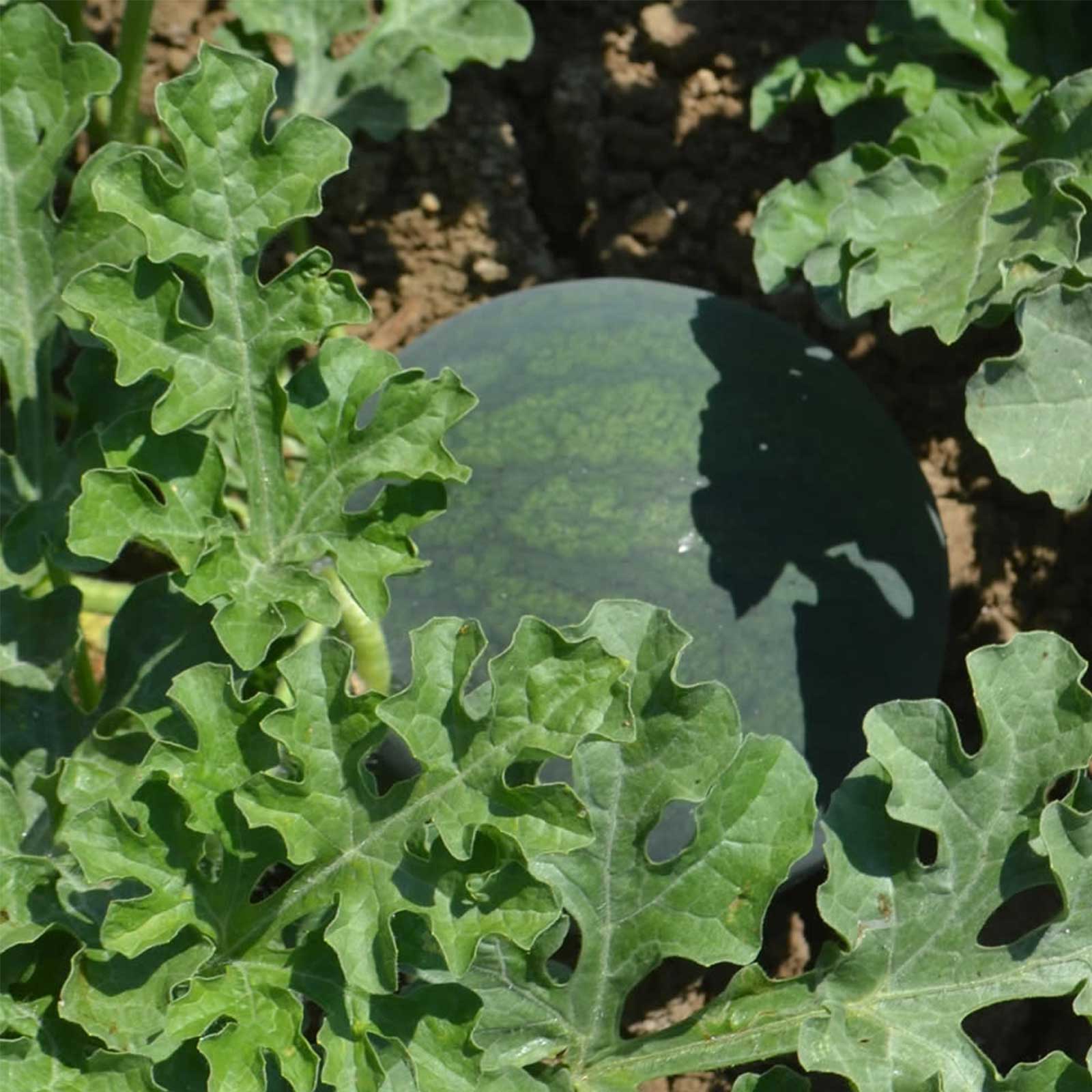
Make sure you grow sugar baby watermelons in a sunny growing area and give them space 91-152 cm (36-60 inches) apart.
Do not forget to account for 60 square feet (about 1,097 m²) of space each plant.
The sugar baby melon seed package typically comes with the stick tag. It provides specific plant spacing recommendations.
How to Maintain Sugar Baby Watermelon
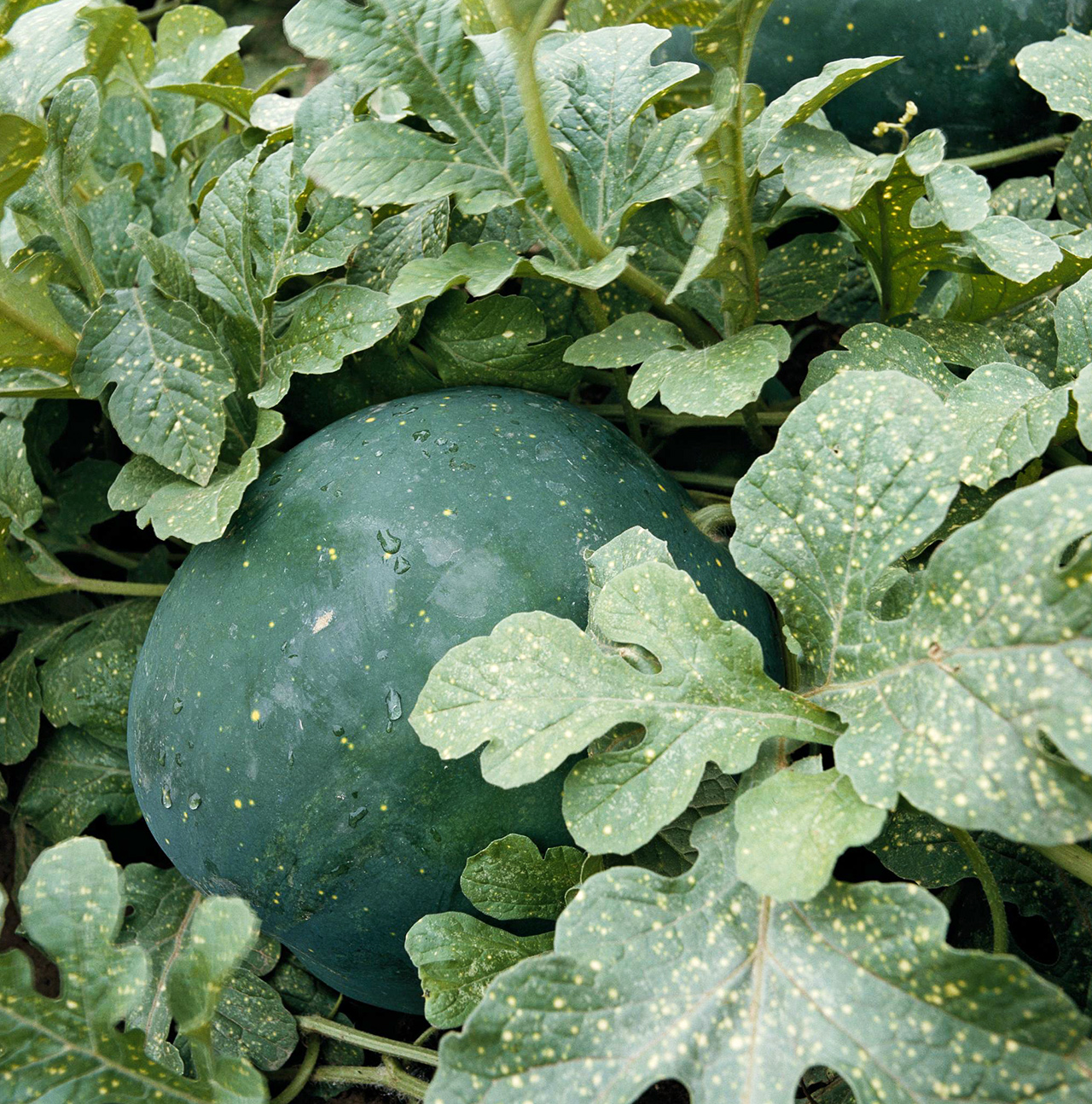
Sow sugar baby seeds inside ¼ inch (0.6 cm) deep in your peat pots, about 14-30 days before transplanting.
The diameter of the medium should be at least 2 inches square at the top. Be sure the young plants have 1 or 2 leaves, too.
When it comes to transplanting the plants, two or three plants each hill need to be spaced 120-180 cm (4-6 feet) apart. The rule is similar to direct-sowed crops.
Since the plants are quite delicate, you have to use scissors for thinning them. Make sure the soil is always intact when transplanting.
Moreover, sugar baby watermelon varieties require plentiful moisture until bee pollination.
Additionally, they need consistent drip irrigation due to their susceptibility to various fungal diseases.
Both fungicide applications and crop rotation help lower the chance of getting a deadly disease.
Once the soil temperatures have increased, mulch the plants. This definitely will keep out unwanted weeds and retain consistent moisture.
In case you use row covers for your plants, do not forget to take them away at flowering. This allows for bee pollination that is crucial to fruit development.
As with other melons, sugar baby watermelons have female and male blooms that come in yellow. The crops are pollinated by bees.
On rare occasions, there is no pollination because of low bee populations and soggy conditions.
If the bee populations in your area are insufficient, give your sugar baby melons specialized care. All you have to do is hand-pollinating them. This will improve the harvest.
To hand pollinate sugar baby melons, prepare cotton swab or tiny paintbrush first. Then, gently dab their male blooms with it. Next, move those watermelon pollens to the female flowers.
Sugar baby watermelon crops may suffer from diseases such as powdery mildew, gummy stem blight, Alternaria leaf spot, and anthracnose.
You also need to watch out certain pests like nematodes, spotted cucumber beetles, and melon aphids.
To get rid of striped cucumber beetles, you should hand-pick them. Floating garden row covers and rotenone applications help keep their populations under control as well.
You can also reduce insect problems by placing sugar baby melons on wood pieces or pots.
Additionally, do not plant pumpkins and watermelons in the same growing spot per row because those crops are from cucumber family.
Watermelon vines can be killed by both light and hard frosts. To protect them from any frost damage, use cold frames as well as fleece blankets. They also extend the sugar baby harvest season.
If you want large sugar baby plantings, for every second alternate row, do not forget to leave 1 rye cover crop strip. It battles against the damaging winds. That way, they won’t cause any damage to your plants.
Growing Sugar Baby Watermelon Vertically
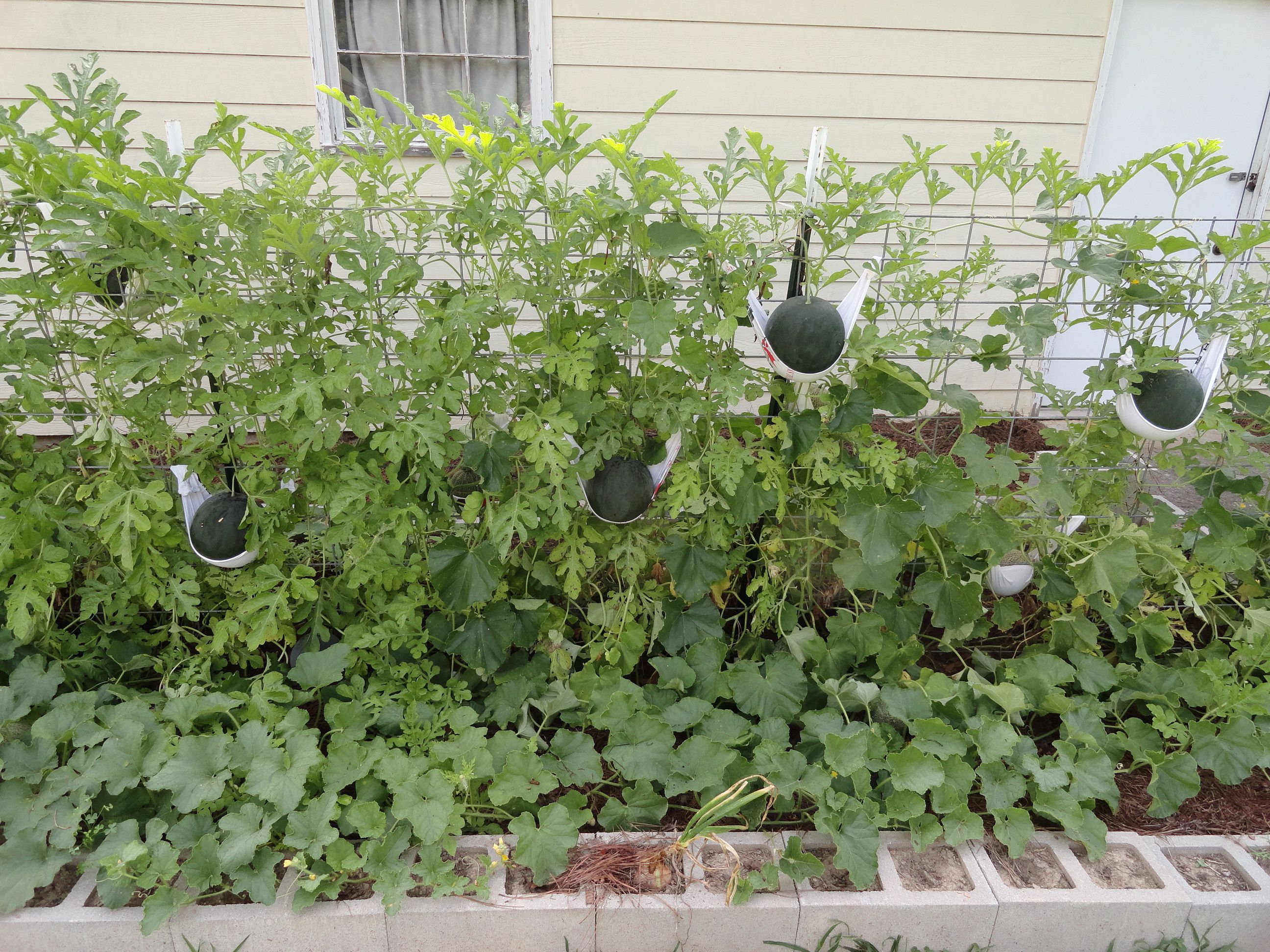
If your space is at a premium, opt for sugar baby watermelon trellis gardening since the melons are small-fruited cultivars. Be sure you reduce spacings between the plants and secure them with pantyhose.
Trellising sugar baby watermelons reduce the chance of foliar diseases and increase air circulation. Once your plants have produced fruits, support them with fabric or netting lifting slings.
Before trellising your sugar baby melons, you need to build a raised garden bed. Then, grow the plants up the metal trellis or chain link fence. For fruit support, use an old pantyhose.
Harvesting Sugar Baby Watermelon
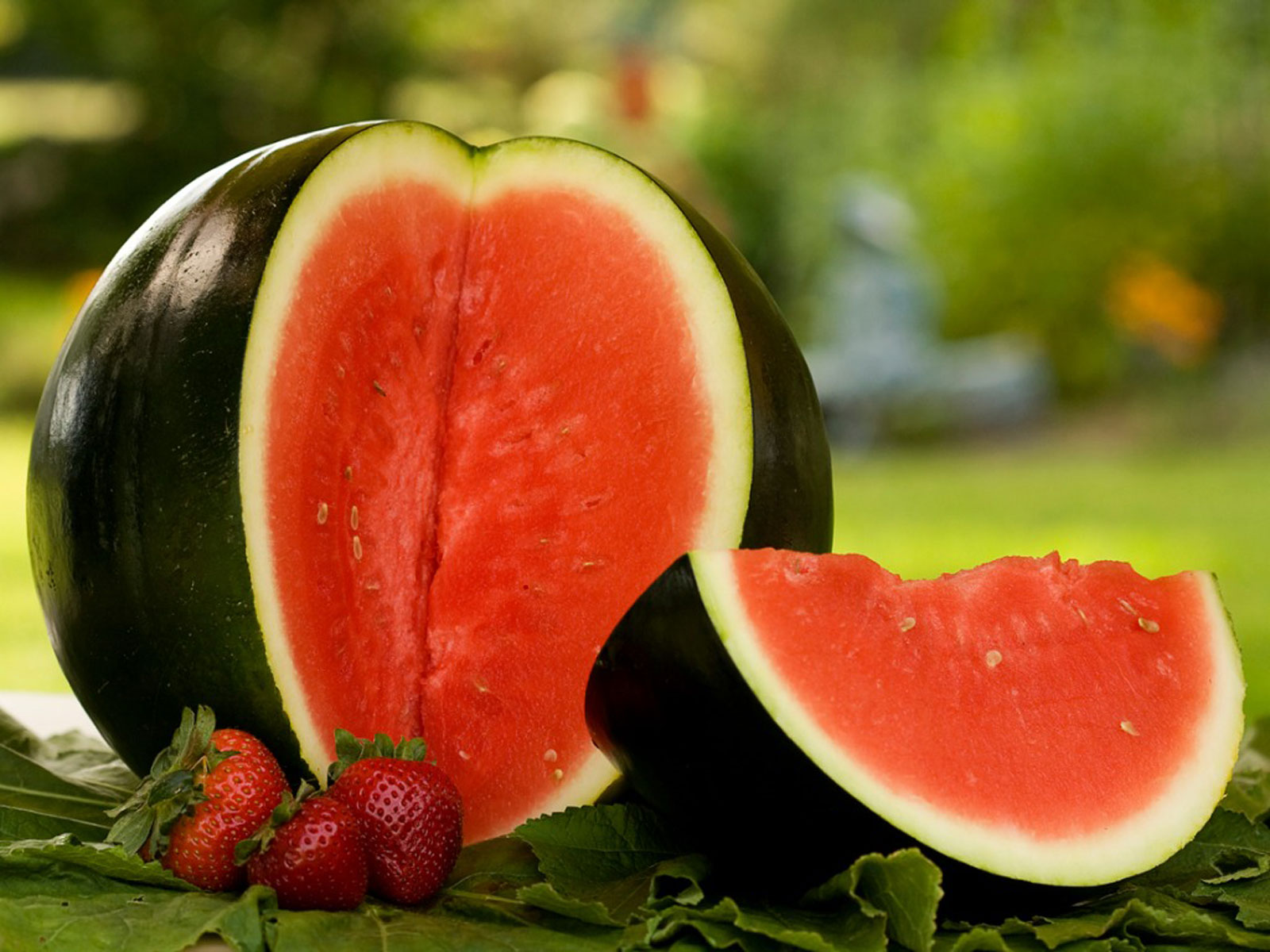
Unfortunately, harvesting sugar baby watermelons are not so straightforward. When ripe, they don’t easily slip from their vines like cantaloupes. To remove the fruits, you should watch other indicators.
Only harvest your watermelons when the color of the rinds darkens to dark green. Roll them over and then look at the portion that touches the ground. If it changes from greenish-white to creamy yellow, the melon is ripe.
Another indicator to know your watermelon is ripe is rapping on its skin. It usually resonates with a low-pitched sound.
Looking at their tendrils can give you a clear sign that is the right time to harvest. When you find them dead, the fruit must be ripe.
After making sure your watermelons are ripe, cut them from the vines. Keep in mind that you should leave approximately 1 inch (2.5 cm) of stem attached. This helps prolong their shelf lives.
When unrefrigerated, watermelons generally will store about 2-3 weeks. Place them in a cool, dark spot like a basement.
After cutting sugar baby watermelon, you should store the unused portions in the refrigerator. In case there are extra melons on your hand, it’s advisable to dice the flesh and then freeze.
Saving Sugar Baby Watermelon Seeds
Separate the seeds from your ripe watermelon flesh. Then, place them into a strainer. Run the water and rub those tiny pieces gently to get rid of stringy fibers.
Add water into a bowl. Put the cleaned watermelon seeds in it. The immature, bad ones will be afloat. Remove them. Repeat the process until there is no floating stuff anymore.
Discard the water. Line the baking sheet with wax paper. Then, spread out the watermelon seeds in one layer onto it.
Place the baking sheet in a sunny area. Let the seeds dry naturally for a day. Bring them into your house.
Continue drying the watermelon seeds for 1 or 2 weeks and stir them occasionally. Before storing those pieces, make sure they are droughty.
Whether you want to grow sugar baby watermelon in planting beds or on a metal trellis, use this article as your guide. Since the fruit has potent antioxidants, it is such an easy way to pack nutrients in.
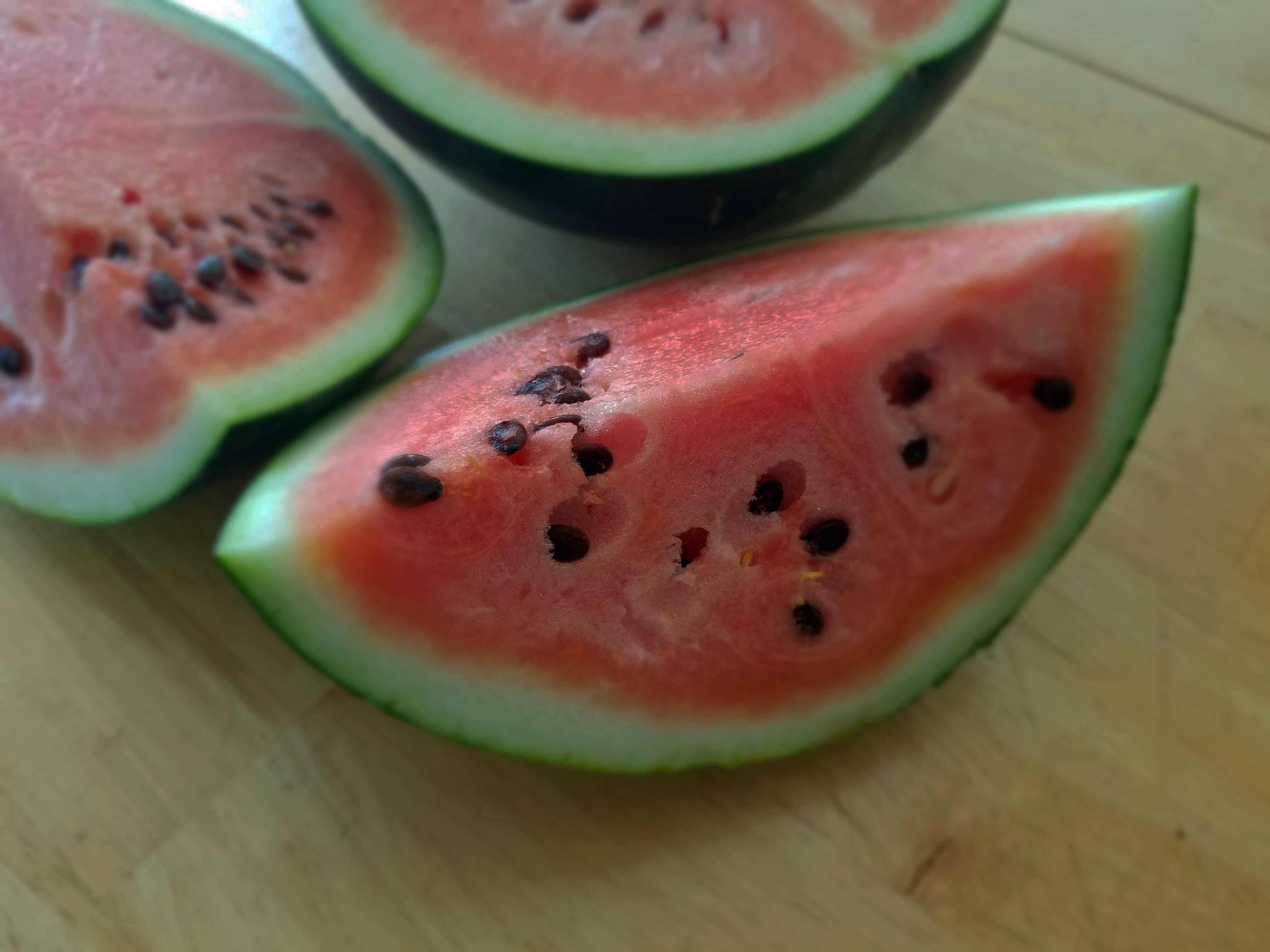
my sugar baby watermelon are grow vert but not round start round the one side flat?
Hi, malcolm. Well, it depends on how you want to build it and what is like in the area around you. Is it you have a wide space or small.
Grow it vertically is good, you give your watermelon has enough ventilation, and has a chance to grow bigger. It reduces to cost a lot of space too.
I have a sugar baby that I think is almost ripe. But it’s not on the ground, it’s in a sling hanging from a trellis. Will it still develop a yellow spot?
Hi Kat, Congrats, time for harvesting 🙂
Based on my experiences, if it still hanging on trellis, it won’t develop a yellow spot. But you can check the ripeness with rapping on its skin.
If it’s a low-pitched sound, then it is ripe.
Some vines I trellised and some I kept on the ground. I harvested 2 ground melons today and they were very sweet, each weighed about 12 to 15 lbs. I am hoping I will harvest the trellised melons just as timely. This was my first attempt and I am pleased.
Great! I’m happy for you.
12-15 lbs is a good weight. It means growing up healthy.
Can’t wait to hear about your next attempt. It will be awesome!
My sugar baby watermelons are hand pollinated and started out growing very fast, then it seems like they just stopped. The biggest ones are only about 3-4 inches wide by 3-4 inches in length. Is this normal? Am I just being impatient?
I am growing my Sugar Baby watermelons in 20 gal fabric containers with wire trellis and the plants appear healthy and had a couple of watermelons that got to 3-4 inches in diameter then they started looking sunken and shriveled after a few days. I’m in Georgia and the weather has been in the 90s recently, but I drip irrigate the containers regularly and we have been getting plenty of PM rain showers. Not sure what is happening to these watermelons. Any ideas?
“ Do not forget to account for 60 square feet (about 1,097 m²) of space each plant”.
Actually 1,097 mp = 11,808 square feet!
Thank you for this wonderful article!